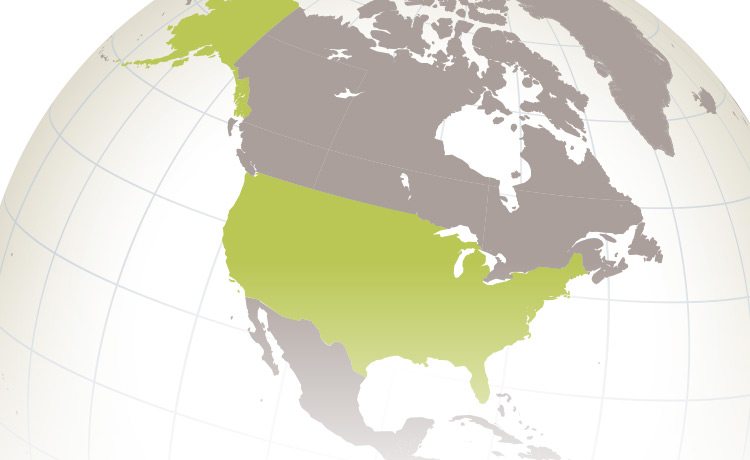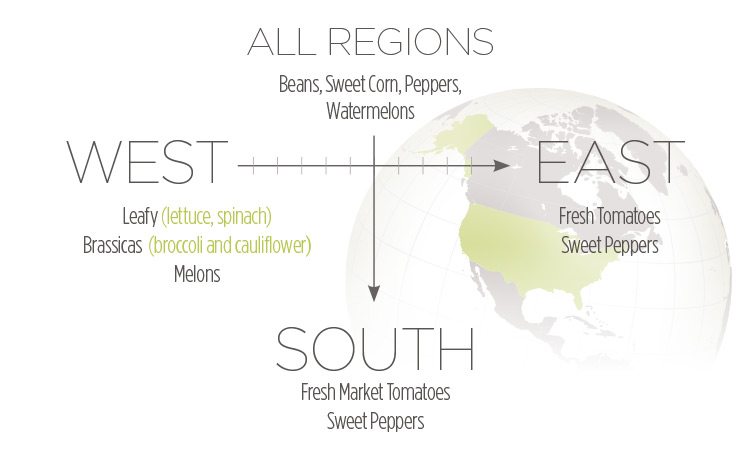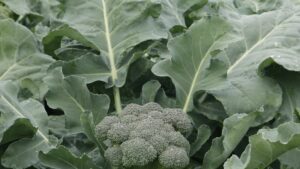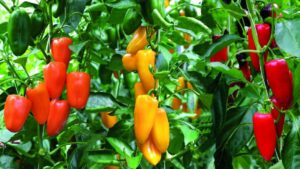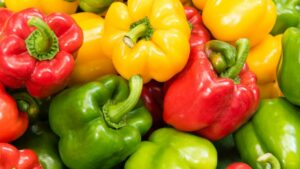When it comes to the latest innovations in vegetable seed varieties, seed companies and breeders keep locale and consumer demands in mind.
Issues and concerns such as information, consistency, labor friendliness, improved disease tolerance and non-GMO rank high on growers’ list of wants, but according to Harry Beukelman, Monsanto’s product and management leader for North America, “U.S. growers are looking for varieties that reduce their agronomic risks and improve their yield potential.”
He says the company’s research and development team works closely with growers to understand and develop solutions to their needs.
Examples of this, Beukelman says, include the continuous improvement of bacterial leaf spot resistance for peppers, which is a high priority, “as is downy mildew resistance in cucurbits and leafy crops. We’ve also invested a tremendous amount of effort into developing Phytophthora blight resistance in sweet and hot peppers. These types of solutions allow us to address growers’ needs.”
Depending on regional environments and climate, certain crops and varieties do better in specific regions, which is why Monsanto’s breeding programs take these “bio zones” into account when breeding for a new variety.
“The West Coast typically grows a lot of leafy (lettuce, spinach) and Brassicas (broccoli and cauliflower),” says Beukelman. “Fresh tomatoes and sweet peppers are mainly grown in the southeastern United States.
“The processing tomato industry is in Northern California. Watermelons are typically grown on both the East and West Coasts, as well as Texas.”
Javier Martinez, HM.CLAUSE vice president of sales for North America and Australia, says the company’s global presence allows it to work side-by-side with growers in every corner of the world to provide the most regionally relevant and reliable vegetable seeds available. “We emphasize building and maintaining good customer relationships so that we can create innovative and adapted local products that meet their specific needs.”
Martinez says there are some crops that are grown in all regions like beans, sweet corn, fresh market tomatoes and peppers. And there are other crops that see higher demand in certain areas, such as melons, that are mostly grown in the western U.S., or watermelon that is grown more in the south.
Climate Drives Development
“Varieties are developed specifically for regional climatic conditions, disease pressures, and for the type of production system used,” he says. “For example, since there are higher virus pressures in the southeast versus on the West Coast, new varieties are introduced more often to keep up with continually evolving diseases.
“In the West, a particular variety may be more in demand for longer periods because there is not the need to adapt as frequently.”
George Ball is chairman and CEO of W. Atlas Burpee Company, commonly known as Burpee Seeds — a company originally founded in 1876. Ball, who is a past-president of the American Horticulturalist Society, says growers are continually looking for more information from gardening and seed companies.
“Along with over 1,000 distinct seeds and plant cultivars, we provide history, cultural tips, recipes and design advice,” Ball shares.
In 2016, the “Meatball” eggplant exceeded the company’s optimistic sales plan by selling eight times the number of seeds and plants, a record for eggplant, according to Ball.
“This hasn’t been seen since 1903’s introduction of Burpee’s Black Beauty, the first uniformly fruited Turkish or Persian eggplant, called aubergine in England,” he adds.
For 2017, Ball puts his money on a giant sweet corn variety.
“Call me crazy, but I think in sweet corn, Jaws will be extremely popular,” he says. “At 12 inches long and six inches around at its extensive mid-section, with kernels almost half an inch deep, Jaws yields nearly double the amount of sweet corn per ear than standard varieties. It’s also beautiful and delicious, descending from much older generations of original North American parents. So it’s more like what Native Americans ate, but much larger.”
“Call me crazy, but I think in sweet corn, Jaws will be extremely popular. … So it’s more like what Native Americans ate, but much larger.”
— George Ball
Latest Innovations
When it comes to the latest innovations in vegetable seed varieties, there remains a seemingly constant flow of new ideas, says Nicholas Tinel, HM.CLAUSE’s vice president of research and development, American Pacific Region.
“We emphasize innovations that benefit both growers and consumers,” Tinel says. “Our recent innovations include adaptation to a changing environment: resistance to emerging pests (Tuta Absoluta), new virus strains, and new abiotic stresses linked to global warming, such as drought and increased soil salinity.
“We’ve also made advancements with regard to consumer traits that were informed by a better understanding of consumer preference and plant metabolism responsible for aroma, sugar content, shelf life and sugar degradation.”
Tinel adds that as the world population continues to grow, demands for food production increase.
“We care about finding sustainable solutions to the agricultural challenges of today and recognize the need to produce more food with less inputs,” he says. “Farmers are the first to benefit from seed innovation because our ultimate goal is to increase marketable yield with varieties that are — in the most basic terms — easier to grow.
“Consumers also benefit from these innovations because they receive better fruit quality, better food and reduced use of pesticides on multi-disease resistant varieties. These advancements are better for the health of the planet and the people who inhabit it, now and in the future.”
At Monsanto, Beukelman says they have been looking at efficiencies and how to improve the uniformity of harvest — specifically in broccoli and cauliflower.
“We developed a ‘raised head’ broccoli line, High Rise, in which the crown is sitting on a longer stem, which allows for the potential for mechanical harvest,” Beukelman says. “Monsanto is working on a product concept in cauliflower that has a more intense white color so that it doesn’t turn yellow when exposed to sunlight, making a more attractive offering at consumer level.
“We also have been developing a cross between romaine and iceberg lettuce, our Frescada line, which offers crispy texture and flavor profile of iceberg, combined with the dark green color and potential for mechanical harvest seen with romaine.”
Burpee’s Ball adds that: “People didn’t trust seed companies in 1876 like they do now. …Farmers take the biggest risks in the business world. This trust depends on our quality at all levels of both the gardening and farming experience.”


